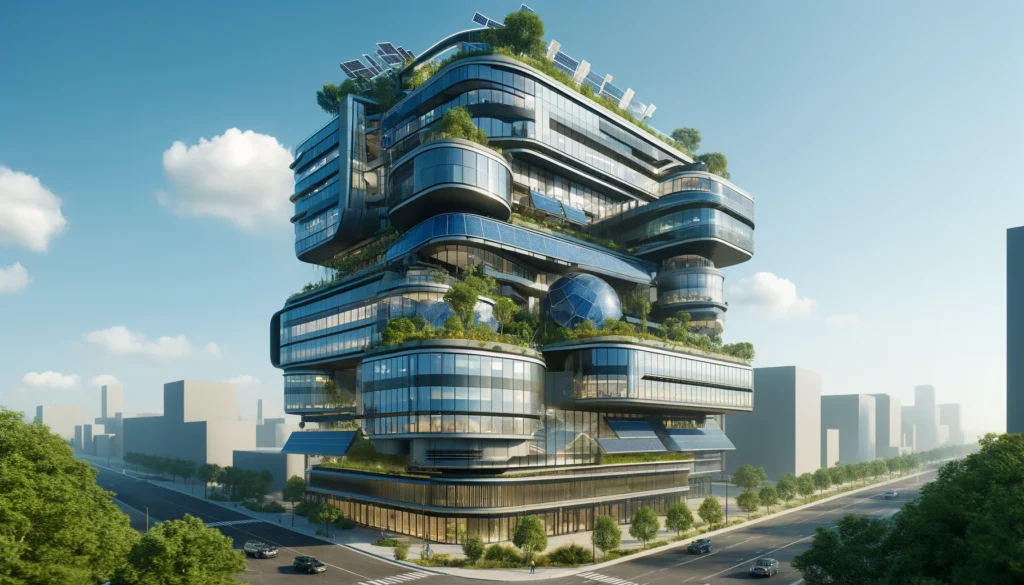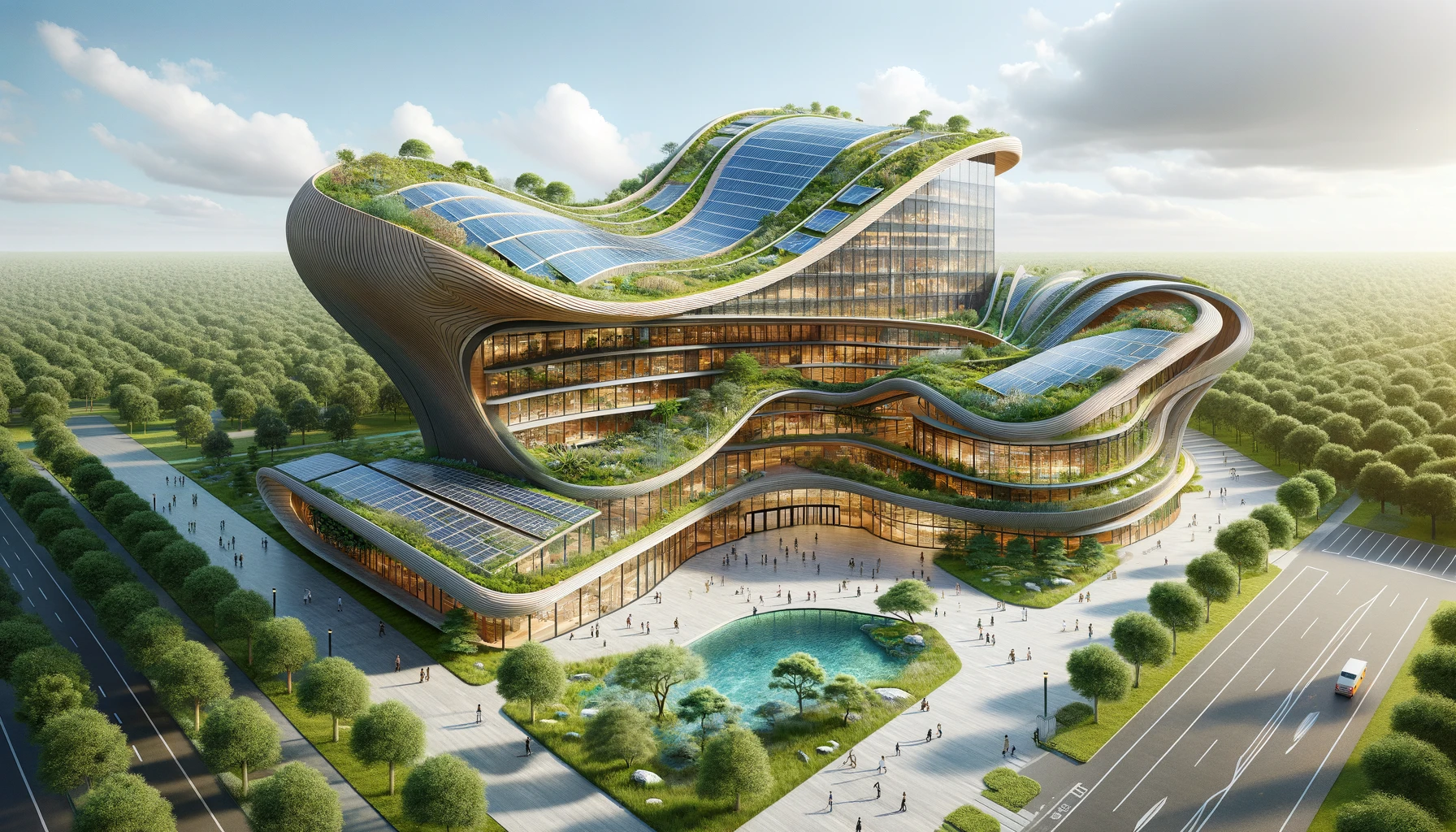The Dawn of Architectural Innovation
In today’s rapidly evolving world, architectural innovation is not just about aesthetic appeal; it’s about creating sustainable, efficient, and intelligent structures that respond to the needs of contemporary society. From skyscrapers that scrape the skies to homes that blend seamlessly with their natural surroundings, the field of architecture is experiencing a transformative revolution.

Smart Buildings: The Future of Architecture
One of the most exciting advancements in architecture today is the integration of innovative technology into building design. Intelligent buildings are equipped with automated systems that control various functions such as heating, ventilation, air conditioning (HVAC), lighting, security, and even appliances. These systems can significantly improve energy efficiency, reduce operating costs, and enhance the comfort and safety of occupants.
For example, consider an intelligent building equipped with sensors that monitor and adjust indoor air quality. These sensors can detect high levels of carbon dioxide and automatically increase ventilation to bring in fresh air. Similarly, intelligent lighting systems can adjust the brightness based on the time of day and occupancy, reducing energy consumption and creating a more pleasant environment.
Sustainable Design: Building for the Future
Sustainability is at the forefront of modern architectural innovation. Architects are increasingly focused on creating buildings that minimize environmental impact and promote long-term ecological balance. This involves using sustainable materials, incorporating energy-efficient systems, and designing for durability and adaptability.
A prime example of sustainable design is the use of green roofs and walls. These features not only provide insulation and reduce energy consumption but also enhance biodiversity and improve air quality. Moreover, buildings with green roofs can manage stormwater runoff more effectively, reducing the risk of flooding.
Another critical aspect of sustainable design is the use of renewable energy sources. Solar panels, wind turbines, and geothermal systems are becoming more common in new building projects, enabling structures to generate their clean energy. This not only reduces reliance on fossil fuels but also lowers greenhouse gas emissions, contributing to a healthier planet.
Adaptive Reuse: Breathing New Life into Old Structures
Adaptive reuse is an innovative approach that involves repurposing existing buildings for new uses. This method not only preserves historical and cultural heritage but also reduces the environmental impact associated with demolition and new construction.
For instance, an old factory building might be transformed into a modern office space or a residential complex. This approach retains the unique character and charm of the original structure while updating it to meet contemporary standards and needs. Adaptive reuse projects often incorporate sustainable design principles, making them both environmentally and economically viable.
Biophilic Design: Connecting with Nature
Biophilic design is an emerging trend that emphasizes the connection between humans and nature in the built environment. This approach integrates natural elements such as plants, water features, and natural light into architectural design, promoting physical and mental well-being.
Research has shown that exposure to nature can reduce stress, enhance creativity, and improve overall health. By incorporating biophilic design principles, architects can create spaces that foster a sense of harmony and balance, benefiting both individuals and communities.
Parametric Design: Pushing the Boundaries of Creativity
Parametric design is a cutting-edge approach that leverages advanced computational tools to create complex and innovative architectural forms. By manipulating parameters such as geometry, materials, and environmental factors, architects can generate unique and efficient designs that were previously unimaginable.
One notable example of parametric design is the Heydar Aliyev Center in Baku, Azerbaijan, designed by Zaha Hadid Architects. The building’s fluid and organic form is a testament to the possibilities of parametric design, showcasing how technology can be used to push the boundaries of architectural creativity.
Prefabrication: Revolutionizing Construction
Prefabrication is another significant trend in modern architecture, offering numerous benefits over traditional construction methods. This approach involves manufacturing building components off-site in a controlled environment and then assembling them on-site. Prefabrication can reduce construction time, minimize waste, and improve quality control.
Moreover, prefabricated buildings can be designed with sustainability in mind, using materials and techniques that enhance energy efficiency and reduce environmental impact. This method is particularly advantageous in remote or challenging locations where traditional construction might be difficult or impractical.
Urban Planning: Designing for Livability
Urban planning is a critical aspect of architectural innovation, focusing on creating cities and communities that are livable, sustainable, and resilient. This involves considering factors such as transportation, housing, public spaces, and infrastructure to develop holistic and integrated solutions.
For example, walkable neighborhoods with mixed-use developments can reduce the need for car travel, promote healthier lifestyles and reduce traffic congestion. Green spaces and parks can provide recreational opportunities and improve urban biodiversity, while efficient public transit systems can enhance connectivity and accessibility.
The Role of Technology in Architectural Innovation
Technology plays a crucial role in driving architectural innovation, enabling architects to design, visualize, and construct buildings more efficiently and accurately. Building Information Modeling (BIM), virtual reality (VR), and augmented reality (AR) are just a few examples of technological advancements transforming the field.
BIM allows architects to create detailed digital representations of buildings, facilitating collaboration and improving decision-making throughout the design and construction process. VR and AR technologies enable immersive experiences, allowing stakeholders to explore and interact with virtual models of buildings before they are built.
The Future of Architectural Innovation
As we look to the future, it’s clear that architectural innovation will continue to evolve, driven by advancements in technology, sustainability, and human-centered design. Architects will increasingly focus on creating buildings that are not only functional and aesthetically pleasing but also adaptable, resilient, and responsive to the needs of their occupants and the environment.
In conclusion, exploring cutting-edge architectural innovation today reveals a dynamic and exciting field that is shaping the future of our built environment. From intelligent buildings and sustainable design to adaptive reuse and parametric architecture, the possibilities are endless. By embracing these innovations, we can create spaces that enhance our quality of life and contribute to a more sustainable and equitable world.
Embracing Sustainable Architecture for a Greener Future
As we navigate the challenges of climate change and environmental degradation, embracing sustainable architecture has become more critical than ever. Sustainable architecture focuses on creating buildings that are energy-efficient, environmentally friendly, and resilient to changing climatic conditions. By incorporating renewable energy sources, using sustainable materials, and designing for adaptability, architects can significantly reduce the carbon footprint of buildings.
One of the fundamental principles of sustainable architecture is the use of passive design strategies. These strategies involve optimizing the building’s orientation, insulation, and natural ventilation to reduce reliance on mechanical systems for heating and cooling. For instance, strategically placed windows to maximize natural light can reduce the need for artificial lighting, while proper insulation can maintain indoor temperatures more effectively.
Another critical aspect of sustainable architecture is water conservation. Incorporating features such as rainwater harvesting systems, low-flow fixtures, and greywater recycling can significantly reduce water consumption in buildings. Additionally, landscaping with native and drought-tolerant plants can minimize the need for irrigation, further conserving water resources.
Incorporating green roofs and walls into building design is another effective way to enhance sustainability. These features provide natural insulation, reducing energy consumption for heating and cooling. They also improve air quality, promote biodiversity, and manage stormwater runoff, contributing to a healthier urban environment.
By embracing sustainable architecture, we can create buildings that not only meet our needs today but also preserve resources for future generations. This approach not only benefits the environment but also enhances the quality of life for building occupants, creating healthier and more comfortable living and working spaces.
In summary, sustainable architecture is a crucial component of modern architectural innovation. By prioritizing energy efficiency, water conservation, and the use of sustainable materials, architects can create buildings that are both environmentally responsible and economically viable. As we move towards a greener future, sustainable architecture will play a vital role in shaping a more sustainable and resilient built environment.
